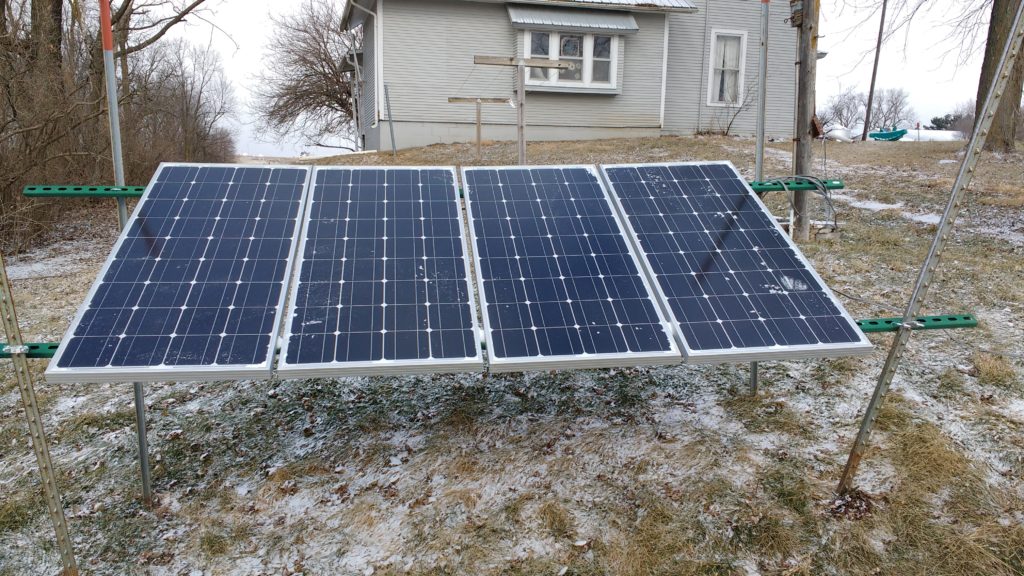
This year I had a bunch of money left over after I sold my motorcycle to my sister. The motorcycle, a 1978 Suzuki GS550, had been sitting in the garage for a season, and I had to admit that I wasn’t riding it anymore. So I sold it to my sister and have missed it ever since. 🙁
To ameliorate my loss I decided to buy some solar panels! The short version, then the details:
- Four 100W Renogy monocrystalline panels at 12V each
- Mounted on some unistrut from Menards and some tee posts
- Wired as two strands of two panels in parallel (about 20A @ 12V per wire)
- About 100 feet of two strands of 2x14AWG UF (I know it’s undersized!)
- Two VicTec 20A PWM charge controllers (one for each strand of two panels)
- Two Costco 6V deep cycle golf cart batteries, wired in series to be one 12V battery
